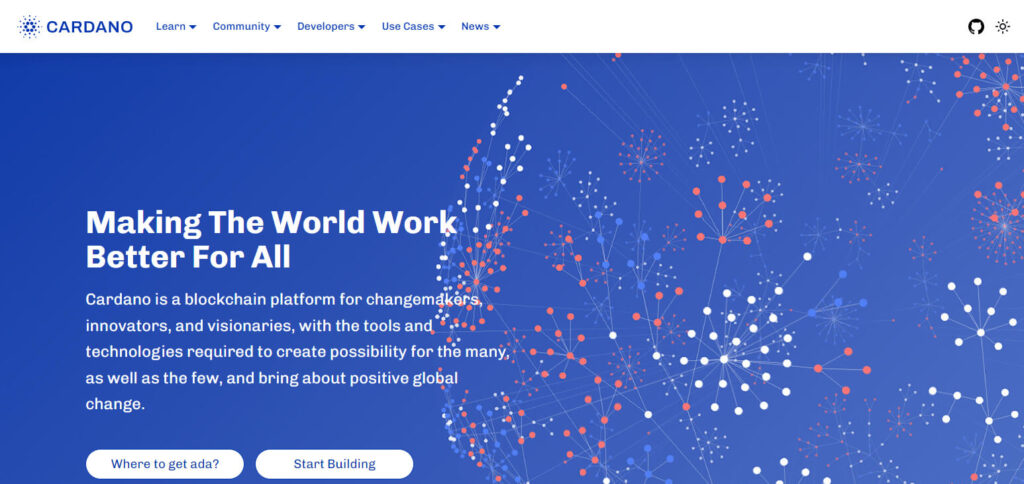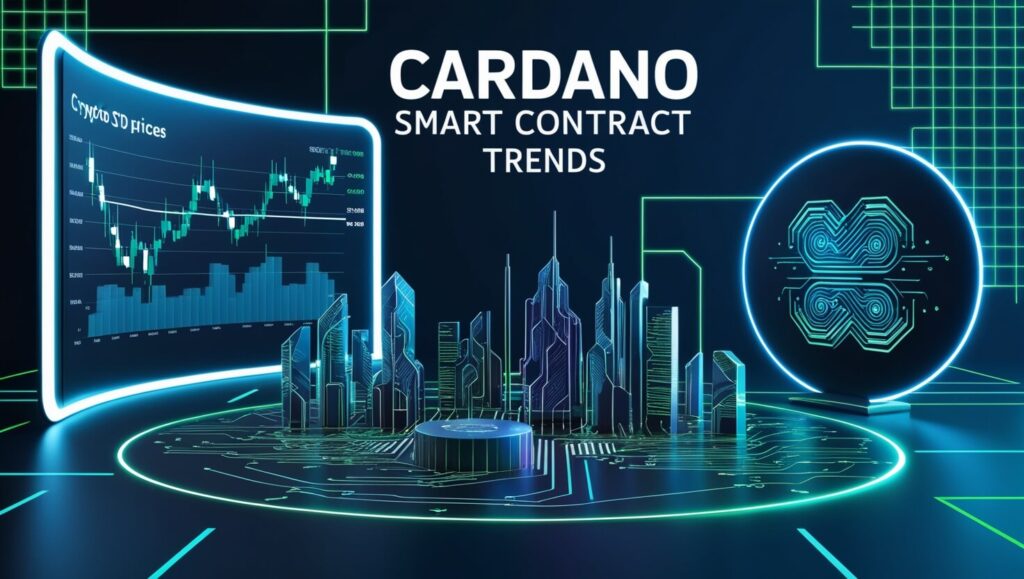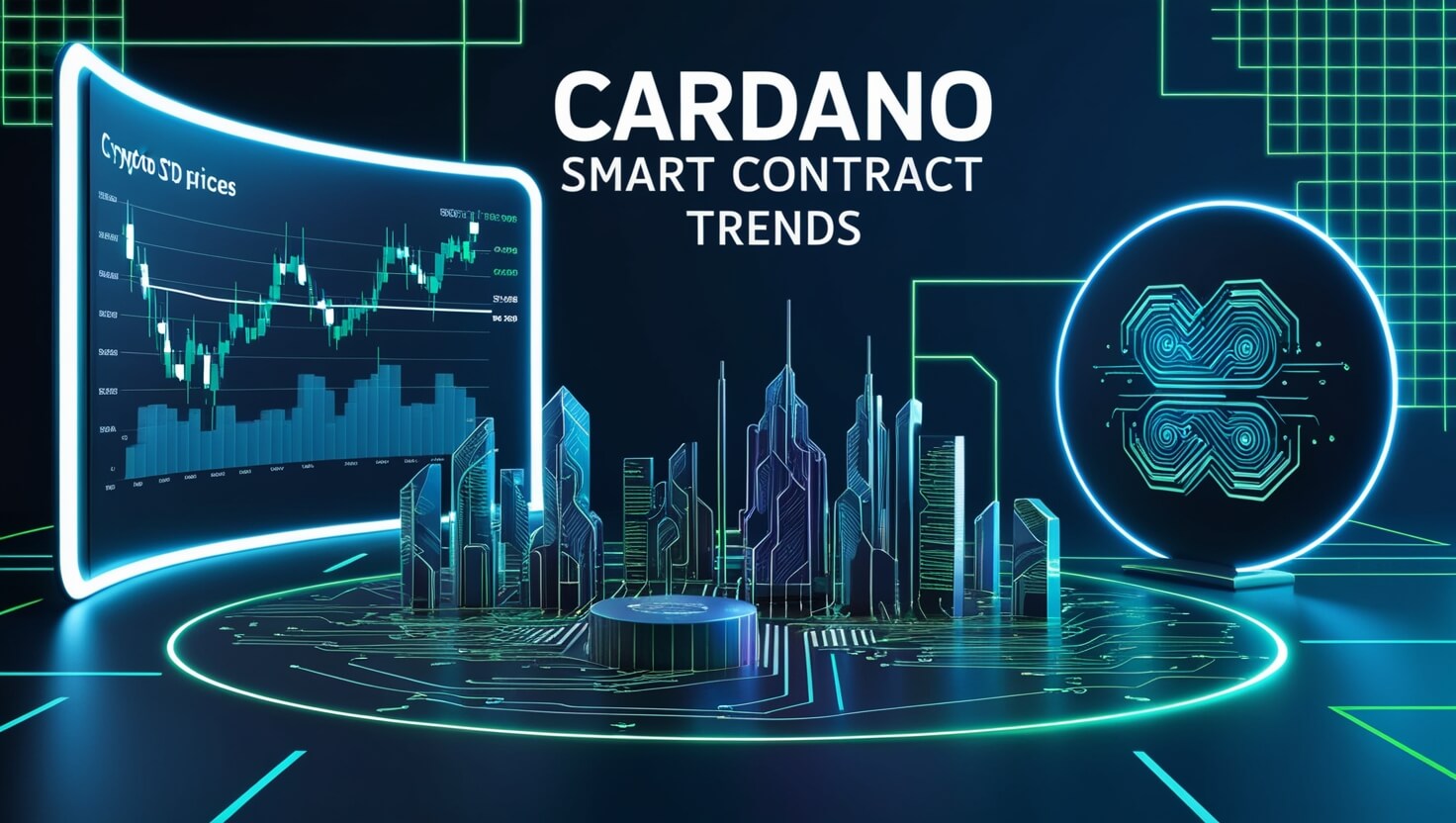In this article, I will cover the Cardano Smart Contract Trends covering significant aspects that are altering its ecosystem.
The smart contract terrain of Cardano is changing fast with the emergence of DeFi, non-fungible token (NFT) adoption boom, new developer tools, and even Hydra scalability solutions.
Make sure to follow the innovations that are creating buzz and the developing prospects of Cardano’s blockchain technology.
About Cardano
Founded by Charles Hoskinson in 2015 and later launched in 2017, Cardano is an open-sourced blockchain platform.
It utilizes proof-of-stake for consensus, which attempts to provide an eco-friendly and effective alternative for traditional proof-of-work blockchains.

The platform’s decentralized application (dApps) and smart contracts are powered by its native cryptocurrency, Ada, named after Ada Lovelace.
The continual development of the platform is managed by the Cardano Foundation, IOHK, and Emurgo, thus securing its growth and adoption.
Evolution of Cardano Smart Contracts

Alonzo Upgrade
The Alonzo upgrade came into effect in September 2021 and from this point onwards trading smart contracts on the Cardano blockchain was made possible. This upgrade also brought the Plutus platform, allowing for the development of dApps and smart contracts using a robust scripting language.
UTXO Model
Unlike Ethereum which works with an account-based system, Cardano works with the Unspent Transaction Output (UTXO) model. With the capability of parallel transaction processing, this model also improves the level of security and scalability.
Increase in Smart Contract Activity
The activity of smart contracts on the Cardano network has considerably skyrocketed. With an increase in the number of smart contracts ever created on the network, dApps expansion has also grown tremendously during the year of 2024.
On-Chain and Off-Chain Components
Cardano’s smart contracts have two components which are on-chain and off-chain: the validator application, which works hosted externally, and the validator script which is an on-chain component. The smart contract logic is defined in the on-chain script and the off-chain application is then responsible for issuing transactions that comply with the contract.
Scalability and Security
Cardano focuses on scalability and security when it comes to smart contracts. Its new energy-efficient consensus mechanism and strong security features have made it a serious competitor in the DeFi and dApp development markets.
Developer & Community Growth

The growth of Cardano’s developer community alongside the overall ecosystem is considerably promising. Here are a few salient points to note:
Active Developer Community: The Cardano developer community has expanded tremendously, and now more than 10,000 developers in over 120 different countries are actively participating in various projects. This community is so diverse that it encompasses people and brands from different fields and geographical areas.
Increased Development Activity: The activity development metric for Cardano network development has at all times been on the top of the leaders’ board for the longest period of time, having numerous teams working on product development, feature enhancements, and active participation on the roadmap.
Collaborative Ecosystem: The Cadanio Foundation carries out yearly surveys so as to capture the developer community’s sentiments. After the 2024 survey it became clear that the respondents have very positive feedback on Cadanio community, further illustrating the cooperative nature of the ecosystem.
Notable Achievements: The Cardano developer community has remained quite active since the commencement of deployment of smart contracts on the Alonzo hard fork in September 2021, where applications development, tools, libraries, and smart contracts are being created.
Support and Resources: The ecosystem’s growth and sustainability is guaranteed by the support and resources offered to developers by the Cardano Foundation, IOHK and EMURGO.
Challenges & Future Outlook
Challenges
Scalability
In terms of growth scalability is an obstacle. Its evolution will be contingent on the system’s ability to support a high volume of transactions seamlessly.
Usability
With regards to adoption, the platform must focus on frictionless accessibility.
Regulatory Uncertainty
For the broader blockchain space, Cardano’s growth and adoption will be stunted due to regions with unstructured regulations.
Competition
Cardano faces stiff competition from other blockchain systems like Ethereum which have already established themselves in the market.
Future Outlook
Technological Advancements
Cardano’s efforts are directed towards ongoing technology enhancement, especially in the areas of consensus algorithm and smart contracting.
Decentralized Governance
Stakeholders will have the power to decide the future of the network in the self-sustaining system of the Voltaire era.
Global Adoption
The decade of 2030 will see Cardano proactively dealing with the global problems and challenges through the use of blockchain technology with utmost decentralization and scalability.
Sustainability
To adhere to the value of social responsibility, Cardano is dedicated to sustainable environmental practices alongside its developmental and economic goals.
Conclusion
To sum up, Cardano’s smart contract ecosystem has developed significantly over the years.
With the Alonzo upgrade introduced in 2021, smart contract functionality was introduced to the platform, and later improvements such as Plutus V2 and V3 expanded the capabilities of the platform even further.
There is now an increasing number of smart contracts on Cardano which mirrors the demand for innovation and expansion of the platform.
By ensuring high levels of security, efficiency, and developer attention, Cardano is looking to maintain its position as a frontrunner in the blockchain world for decentralized applications and smart contracts.
As Cardano improves upon its ecosystem and strives for greater blockchain adoption, the future symbolizes great potential for the platform.










